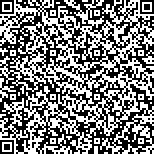| 本文已被:浏览 1259次 下载 1242次 |

码上扫一扫! |
|
|
| 珠江口城市段近岸表层水体浮游细菌分离方法比较 |
|
段丽1,2,李佳岭1,2,王攀登1,2,尹龄紫1,2,李鑫1,2,董雷1,2,肖敏1,2,李文均1,2
|
|
1.中山大学 生命科学学院,广东 广州 510275;2.南方海洋科学与工程广东省实验室(珠海),广东 珠海 519080
|
|
| 摘要: |
| 为了更好地分离珠江口未/难培养的浮游细菌,本研究以珠江河口三个样点的水体为研究对象,同时采用了纯培养和免培养的方法,对不同培养基的分离效果进行了探索。在纯培养实验中,本研究选择了7种不同的分离培养基,共分离获得153株菌;同时,将扩增子分析结果作为分离效果的参考,所有环境样品中共包含3 553个操作分类单元(operational taxonomic units,OTUs)。对三个样点微生物类群的多样性进行比较,纯培养结果显示珠江口下游珠海样点多样性最高,其次为中大和虎门样点;免培养则显示虎门样点多样性最高;对比7种不同的分离培养基,Z7(R2A)培养基的分离效果最好,分离菌株数和分离类群的α多样性最高,Z1(改良ISP 2)次之;主坐标分析结合韦恩图的结果表明相比其余的培养基,Z1和Z7培养基分离获得的菌群兼具普遍性和特异性,进一步证明了这两种培养基的分离效果较佳;冗余分析结果表明K2HPO4、酵母粉、可溶性淀粉、MgSO4·7H2O、麦芽膏和葡萄糖与特定类群的分离有相关关系,其中K2HPO4的影响最为显著(P<0.05)。本文通过7种不同培养基对河口微生物分离效果的探究,有助于我们在研究未知微生物的营养特性时,选择成分和组成更合理的培养基来提升河口微生物纯培养的分离效率。 |
| 关键词: 珠江河口城市段 浮游细菌 纯培养方法 多样性 |
| DOI:10.14188/j.ajsh.2020.05.006 |
| 分类号:Q938.8 |
| 基金项目:国家自然科学基金项目(31528001);博士后科研基金项目(2018M643294);广东省基础与应用基础研究基金(2020A1515011139)。 |
|
| Comparison study on the isolation of bacterioplankton from surface water of urban nearshore of Pearl River Estuary |
|
DUAN Li1,2, LI Jialing1,2, WANG Pandeng1,2, YIN Lingzi1,2, LI Xin1,2, DONG Lei1,2, XIAO Min1,2, LI Wenjun1,2
|
|
1.School of Life Science, Sun Yat-sen University, Guangzhou 510275, Guangdong, China;2.Southern Marine Science and Engineering Guangdong Laboratory (Zhuhai), Zhuhai 519080, Guangdong, China
|
| Abstract: |
| To efficiently isolate the unculturable bacterioplankton in estuary area, culture-dependent and culture-independent methods were adopted in this study to assist bacterial isolation from three water samples of the Pearl River Estuary using different media. A total of 153 bacterial strains were isolated by using seven media. On the other side, a total of 3,553 OTUs (operational taxonomic units) were obtained from the samples by using Illumine sequencing. By comparison, the highest diversity of bacterial isolates was observed in the Zhuhai sample, followed by Zhongda and Humen samples using culture-dependent method; however, the highest diversity of bacterial community was observed in the Humen sample using culture-independent method. Furthermore, among the seven isolation media, Z7 (R2A) exhibited the best performance on bacterial isolation, followed by Z1 (modified ISP2). Principal co-ordinates analysis and Venn diagram showed that the bacteria isolated from Z1 and Z7 media were both universal and specific, which proved that the two media had better isolation effect. Redundancy analysis demonstrated that particular components including K2HPO4, yeast extract, soluble starch, MgSO4·7H2O, malt extract, and glucose in the media were closely related to specific bacterial groups, and K2HPO4 had the most significant influence (P<0.05). The results of this study will help to select suitable and efficient media for bacterioplankton isolation in estuary areas, especially when the nutritional characteristics of the targeted microorganisms are unknown. |
| Key words: urban area of Pearl River Estuary bacterioplankton culture-dependent method diversity |

